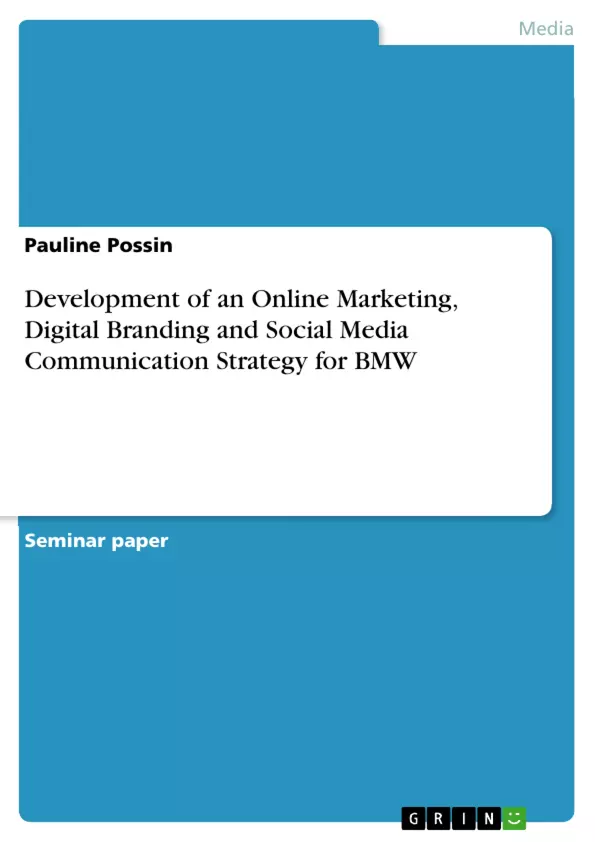The invention of social media had one of the biggest impacts on how people live today. Not only communication has changed, even more it influences the whole perception and creation of reality.
Throughout history, developments in communication and technology have gone collateral. Technological advances, such as the internet, social media and mobile devices, have changed human behavior and communication. Back in 1980, Toffler describes in his book "The third wave" how society had progressed through three historic waves. The first one started from a hunter-gatherer structure to transform to an agriculture society. Second, the industrial age with its technological advances, starting to provide mass distribution of consumption, media, education and entertainment. The third wave is the so called "Information Age", when knowledge began to become more valuable over material items, and it has just begun. New inventions, like virtual reality, voice recognition, and connected mobility are going to permeate society in the future. Entrepreneurs need to make use of these trends to thrive in an omni-connected, always-online and non-real world.
The online marketing, digital branding and social media communication strategy represented in this paper, is created for a car brand. In this essay, the company BMW is going to be used as a substitute, to show how the strategy can be adapted to a specific brand.
Inhaltsverzeichnis (Table of Contents)
- I. Introduction
- II. Theoretical Background
- 1. The creation of reality in todays world
- 2. The evolution of the second screen
- 3. The impact of the subconscious mind on decision making
- III. Online Marketing, Digital Branding and Social Media Communication Strategy
- 4. Market trends
- 4.1 Automotive technology advances
- 4.2 Mobile marketing
- 4.3 Video marketing
- 4.4 The role of mobile apps
- 5. Online Marketing, Digital Branding and Social Media Communication Strategy for BMW
- 5.1 Introduction
- 5.2 Target group
- 4. Market trends
Zielsetzung und Themenschwerpunkte (Objectives and Key Themes)
This text explores the impact of technological advancements on communication and reality perception, with a focus on the automotive industry and its evolving relationship with consumers in the digital age. It delves into theoretical frameworks and analyzes the application of online marketing, digital branding, and social media communication strategies for a car brand, using BMW as an example.
- The influence of technological advancements on human behavior and communication
- The evolving nature of reality in a technologically-driven world
- The role of media and social media in shaping perceptions and agendas
- The impact of the subconscious mind on purchasing decisions
- Strategic application of online marketing, digital branding, and social media in the automotive industry
Zusammenfassung der Kapitel (Chapter Summaries)
The introductory chapter discusses the historical progression of communication and technology, highlighting the "Information Age" and its impact on human behavior. Chapter II delves into the theoretical background, exploring the concept of reality creation and the influence of media. It analyzes the relevance of Plato's allegory of the cave in today's digital world, emphasizing the role of social media in shaping shared reality. Chapter II also examines the phenomenon of the second screen and its implications for marketing and communication. The impact of the subconscious mind on consumer decision making is further explored, highlighting the importance of engaging emotions in marketing strategies.
Chapter III focuses on online marketing, digital branding, and social media communication strategies, specifically in the automotive industry. The chapter analyzes key market trends, such as the rise of the connected car, mobile marketing, video marketing, and the importance of mobile apps.
Schlüsselwörter (Keywords)
The text explores key concepts related to communication, technology, reality creation, social media, media influence, subconscious mind, consumer decision making, online marketing, digital branding, and automotive industry trends. Important themes include the connected car, mobile marketing, video marketing, and the role of mobile apps in shaping consumer behavior and engaging with audiences in the digital age.
- Citar trabajo
- Pauline Possin (Autor), 2017, Development of an Online Marketing, Digital Branding and Social Media Communication Strategy for BMW, Múnich, GRIN Verlag, https://www.grin.com/document/380445



